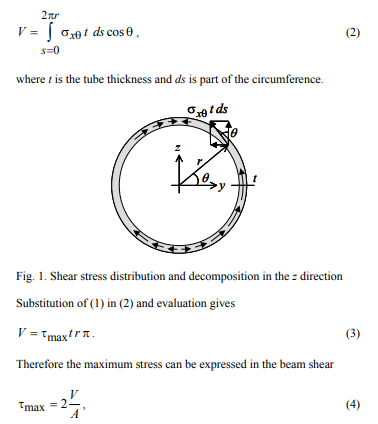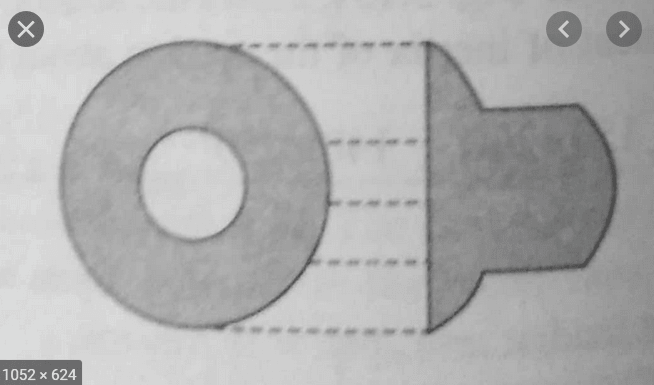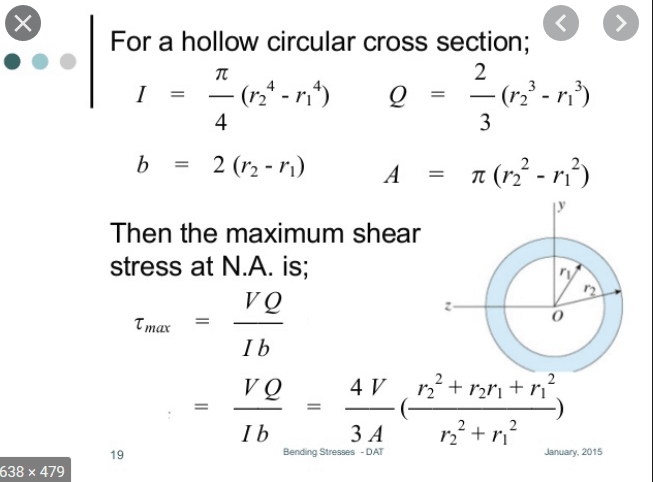flyforever85
New member
- Jun 22, 2010
- 178
Hi all,
I'm having trouble solving this problem. I have a pipe, on a certain section this pipe has a shear load and torque applied, they both generate shear stress on the same plane.
A is the point at the top of the pipe section (12 o'clock), B at 3 o'clock etc, C at 6 o'clock and D at 9 o'clock.
We know that:
[ul]
[li]shear stress from shear load is max at B and D and 0 at A and C[/li]
[li]shear stress from torque is max at any point of the outer circumference so at A, B, C and D[/li][/ul]
When the shear stress ARE NOT directed in the same direction, but they are on the same plane (for example between A and B at 45 degrees) how do I sum them?
I need to find a tau xy to put in Von Mises equation.
Thank you
I'm having trouble solving this problem. I have a pipe, on a certain section this pipe has a shear load and torque applied, they both generate shear stress on the same plane.
A is the point at the top of the pipe section (12 o'clock), B at 3 o'clock etc, C at 6 o'clock and D at 9 o'clock.
We know that:
[ul]
[li]shear stress from shear load is max at B and D and 0 at A and C[/li]
[li]shear stress from torque is max at any point of the outer circumference so at A, B, C and D[/li][/ul]
When the shear stress ARE NOT directed in the same direction, but they are on the same plane (for example between A and B at 45 degrees) how do I sum them?
I need to find a tau xy to put in Von Mises equation.
Thank you



